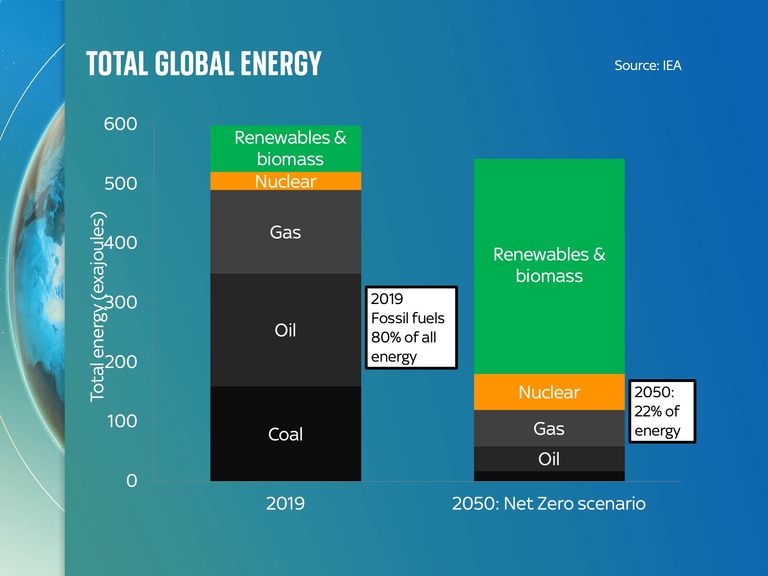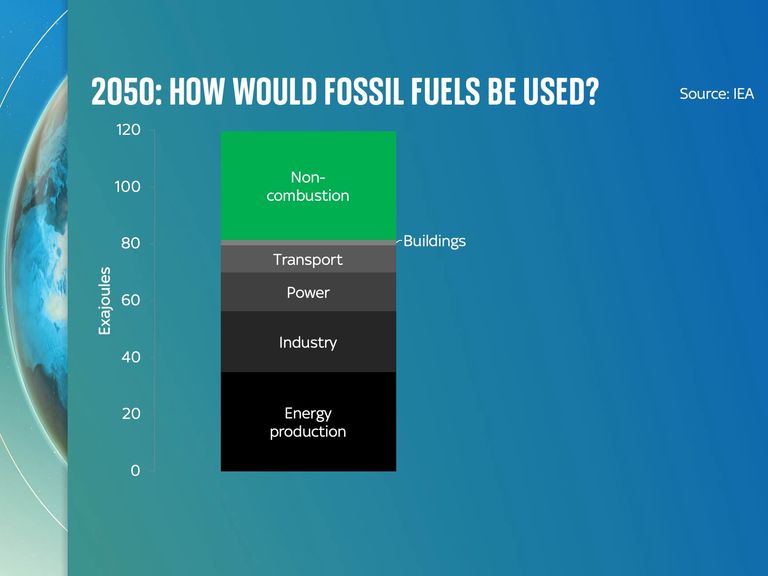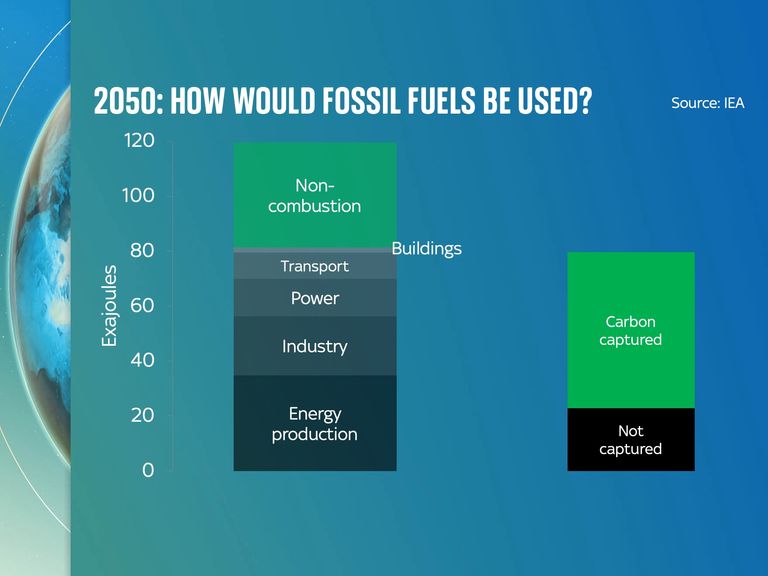The last-minute deal agreed at the COP28 summit in Dubai to move away from fossil fuels is being heralded as a major breakthrough.
But while it’s first the time these annual climate negotiations have agreed to reduce our reliance on coal, oil and gas, it stops short of what many campaigners had been demanding: a promise to phase out fossil fuel use altogether.
Which raises a question: Why?
Why couldn’t the meeting go one step further and promise to leave all fossil fuels in the ground?
Please use Chrome browser for a more accessible video player
1:20
Applause for ‘historic’ COP28 deal
Perhaps the best answer begins somewhere unexpected: with a piece of Lego.
Most Lego bricks are made of a plastic called Acrylonitrile Butadiene Styrene, or ABS for short. It’s a tough thermoplastic, which is to say one of those plastics you can melt down and form back into other shapes again, and it’s brilliant at doing all the things Lego bricks need to do.
It’s incredibly durable. It can be moulded precisely, with tolerances of within four microns, meaning one brick fits neatly into another.
Finally, it has pretty unbeatable “clutch power”, as the company calls it: the bricks stick together robustly but are also pretty easy to pull apart.
But ABS is made, like nearly all plastics, out of chemicals derived from oil and gas.
A few years ago Lego committed to trying to make its blocks not directly from oil but from other feedstocks.
After much work it eventually settled upon old plastic bottles – or recycled polyethylene terephthalate (RPET), to use the technical term.
But, try as it might, it struggled to make this RPET work as well as ABS. The only way to make it perform as well as the old brick – the rigidity, the accuracy, the “clutch” – was to process it and reprocess it, adding a host of additional materials along the way.
A few months ago, it revealed that in practical terms its efforts thus far had failed. Ironically enough, it took more energy to turn those recycled bottles into bricks than it did to take oil and turn it into bricks.
Fossil fuels are hard to beat
Now, it’s still relatively early days. But Lego’s efforts are a pretty good reminder of something pretty profound. Like it or not, fossil fuels are remarkably good at what they do.
We use them in vast quantities because they are a brilliant source of energy and a brilliant source of chemicals.
Coal, demonised as it may be these days, isn’t just good at firing up power stations; it’s also nearly unbeatable (in its coked form) at helping you turn certain ores into metals.
The good news – from a carbon cutting perspective – is that we’re getting better and better at finding alternatives to most of the things fossil fuels do.
Electric cars are in many ways better than the petrol cars they’re replacing. Wind and solar panels are very good at generating electricity – though we’re still working on reliable, affordable and green ways to back up the grid when the wind’s not blowing.
But for certain purposes – purposes far more serious than some toy building blocks – it’s still very hard to beat fossil fuels.
We still rely on natural gas for most of the world’s nitrogen fertiliser production, without which half of the world would starve.
We still have yet to find a way of mass producing concrete without spewing a lot of carbon dioxide into the air. And making plastics without oil is, as Lego learnt to its cost, tricky, to say the least.
Read more from Sky News:
COP28 deal is historic – but possibly for the wrong reasons
Climate minister makes 6,313-mile round trip for Rwanda vote
Now, there are very smart people working on all of the above and there are really promising green candidates for many of these tricky fossil fuel products.
But many remain at the prototype stage, a very long way from being able to compete on a level playing field with their industrial counterparts.
The upshot is that even the most ambitious plans for how we might reduce global carbon emissions still assume we’ll be using fossil fuels come 2050 – and potentially into the foreseeable future beyond that too.
Even optimistic plans admit we’ll need some fossil fuels
Take the International Energy Agency (IEA) Net Zero by 2050 plan.
This framework has all the green credentials – indeed it’s often cited approvingly by organisations like Just Stop Oil, since its models suggest there’s no need for further oil and gas exploration.
But even this plan still assumes we’ll be getting more than a fifth of our energy from fossil fuels (mostly oil and gas) come 2050.

Now it’s worth saying, about a third of those 2050-vintage fossil fuels are not being burnt, but are instead being turned into products like plastics (including Lego bricks, if they haven’t cracked it by then).
Which is an important distinction because they won’t be responsible for the carbon emissions we’re really concerned with.

But that still leaves a lot of fossil fuels being burnt – a lot of them in the engines of planes (sustainable aviation fuel will only get us so far, thinks the IEA) and some to do all those other tricky things like making fertilisers and so on.
And here’s the key thing, the thing one can’t emphasise enough: this is not a conservative plan. This is about the most optimistic plan you’ll find among policymakers today (that doesn’t involve drastic changes in living standards).

But even this plan for net zero depends on a large chunk of fossil fuels being burnt.
Some of the emissions, reckons the IEA, can be captured and squirrelled away underground (“carbon capture and storage” or CCS as it’s called) – though it’s worth saying CCS is one of those technologies that’s still barely been carried out at large scale.
But even after you subtract that, there’s still a not unsubstantial amount of unabated fossil fuel burning going on.
Even in 2050. Even in the most optimistic of all likely pathways.
And here’s the other thing you need to know. We’re already falling far short of that pathway.
Right now our oil production is way, way above where that IEA pathway said it should be.

Reasons for hope
Global carbon emissions are now so far beyond where they should be heading if we wanted to keep global warming below the 1.5C threshold most campaigners are pushing for.
Indeed, a glance at the statistics suggests that that goal is now incredibly unlikely – some would say impossible.
Yet for all of this, there’s plenty of reasons for hope.
Overall emissions may be higher than we’d like them to be, but by the same token they’re considerably lower than they seemed to be heading back in 2015.
Please use Chrome browser for a more accessible video player

2:56
Carbon emissions: The global picture
Thanks to technologies like wind turbines, batteries and solar panels, the world is getting better at generating clean energy quicker than expected.
The very scariest climate outcomes look much less likely today than they did a few years ago – according to the IPCC’s own analysis.
But the more we wrestle with the difficulties of the energy transition, the clearer it is how enormous the challenge ahead remains. And a forensic look at that challenge underlines why there’s a very big difference between pledging to “phase down” and to “phase OUT” fossil fuels.
The former is doable – and it’s pretty extraordinary it’s taken this long for COP ministers to commit to it.
Achieving the latter by 2050 while maintaining today’s levels of living standards is close to inconceivable.







